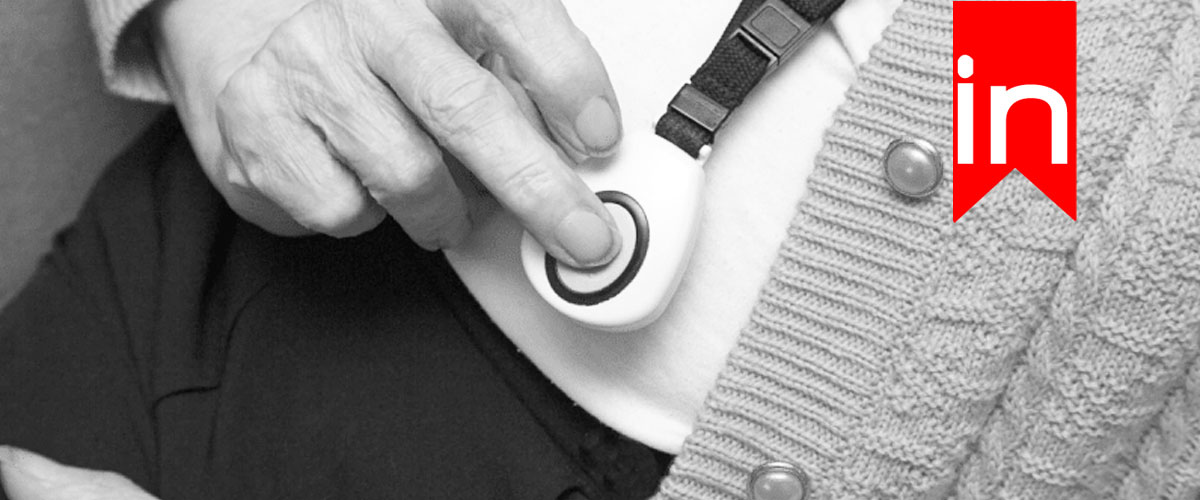Medical alert systems have become an important part of our lives and this comes as no surprise. According to Canada.ca, “Falls are the most common cause of injury among the elderly in Canada, with 20-30% of seniors falling at least once a year.
Falls account for 85% of all hospital admissions related to injuries seniors, 95% of all hip fractures, $2 billion in direct medical costs each year, and over one-third of older adults admitted to long-term care after a fall.”
Highlights
- Medical alert systems are crucial for seniors in Canada, where falls lead to significant injuries and medical costs annually, enhancing the elderly’s safety and independence.
- These systems include a base unit and a portable panic button, which can be worn as a pendant or watch, providing a direct line to emergency help even without a base unit nearby.
- Panic buttons, often part of a larger system, cannot usually be purchased separately; they feature enhancements like GPS, fall detection, and mobile connectivity to ensure comprehensive emergency coverage.
Consequently, medical alert systems have become widely distributed technology used by family members seeking better protection for their loved ones and seniors who want peace of mind concerning their safety in their own homes.
But what exactly are medical alert systems and how do they work?
Medical Alert System
A medical alert system, also known as a personal emergency response system is a portable system that provides a quick and easy way for the elderly, people with health problems, as well as those who live alone to get help in the case of emergencies, whether it’s a medical emergency, a fall, a fire, or any other situation that require urgent assistance. In an essence, these systems include a help button that connects you to a live representative by dialing an emergency response center (monitoring center) once it is pressed. Some services will even phone you to remind you that you need to take your meds.
There are cellular options and GPS-based mobile solutions for people on the go, as well as options that automatically send an alarm when a fall is detected. The most basic systems use a landline and consist of a base unit and a portable help button (also known as a panic button) you can wear around the house.
Panic Buttons
The panic button is highly preferred by most people mainly for its versatility and mobility. It may be worn as a necklace pendant or as a watch on your wrist. Although there are panic buttons with GPS technology that you may travel with, it is majorly used within and around the home. Panic buttons allow you to be able to keep doing what you love and go wherever you want without any fear of being disconnected from security and help providers. They are also very easy and convenient to use! Panic buttons are designed to alert a monitoring center when a user is facing urgent needs on their own. If you require assistance while at home or in your backyard, simply press the panic button to contact the emergency response center.
Panic buttons are nearly usually waterproof, allowing them to be worn in the shower, and they can communicate with the base unit from up to 1,500 feet away so you don’t even have to carry the base unit around. For emergencies, the panic button will do just fine. You should however test your panic button by pushing the button from various positions across your home and yard to see what distance away from the base unit you should expect the panic button to be active.
Getting A Panic Button
It is important to note that as far as medical alert systems are concerned, panic buttons are usually offered as part of an entire medical alert system setup. There are however smaller medical alert systems that do not require a base station to function. These mobile (on-the-go) medical alert systems are small (for easy transportation), usually have GPS and cellular connectivity (for real-time location monitoring) and just the one, centrally placed panic button which makes getting access to emergency services easy.
Some panic buttons are designed to be linked to mobile devices in order to make monitoring easier. Some panic buttons also have automatic fall detection alert systems embedded in them for additional protection of the user.
There are several medical alert system providers known for quality and excellence of service. Getting your hands on a panic button can easily be done by reaching out to them and making enquiries on available options to decide which is the best fit for you.
How Much Does A Panic Button Cost?
Panic buttons that are included as part of whole in-home medical alert systems are not sold separately so if that is the option you prefer you might have to get the entire system installed. That being said, the in-home medical alert systems are usually cheaper compared to mobile medical alert systems (due to the inclusion of GPS and cellular connectivity).
For exact prices, you should contact your preferred medical alert system provider as prices of protection plans and panic buttons vary from provider to provider. You should also note that the inclusion of additional features like automatic fall detection, cellular connectivity, GPS monitoring and mobile app connectivity may incur additional costs. so you might want to ensure you enquire from your medical alert system provider about all these and how they affect the total cost.


